Cold Brew vs. Latte: Everything You Need to Know Before Your Next Sip
Coffee lovers often debate between cold brew and latte, two distinct beverages that cater to different preferences and occasions. While cold brew is known for its smooth, low-acid, and refreshing qualities, latte is a creamy, comforting espresso-based drink.
This guide will help you understand:
-
Cold Brew vs Latte: What’s the Difference?
-
How to Make Cold Brew & Latte at Home
-
Which One is Stronger and Healthier?
-
Frequently Asked Questions (FAQ)
Cold Brew vs. Latte: What’s the Difference?
While both cold brew and latte are popular coffee choices, they differ significantly in brewing method, flavor, caffeine content, and serving style. Here’s a detailed breakdown:
1. Extraction Process and Brewing Time
The way these drinks are made is fundamentally different, impacting their texture, taste, and overall coffee experience.
Cold Brew:
-
Made by steeping coarsely ground coffee beans in cold or room-temperature water for 12 to 24 hours.
-
Since there’s no heat involved, extraction occurs slowly, reducing acidity and bitterness while enhancing natural sweetness and smoothness.
-
The resulting coffee is highly concentrated and often diluted with water or milk before serving.
Latte:
-
Prepared in under 5 minutes using a high-pressure espresso machine.
-
A single or double shot of espresso is extracted, then combined with steamed milk and a light milk foam layer.
-
The heat and pressure extraction create bold, aromatic flavors that blend well with milk.
Key Takeaway:
Cold brew takes patience but rewards you with a smooth, naturally sweet coffee. Lattes are made quickly but rely on fresh, hot extraction for a balanced taste.
2. Flavor Profile and Acidity
Cold Brew:
-
Studies show that cold brew is naturally less acidic due to its long, slow steeping process (SCA, 2022).
-
The flavor is smooth, mellow, and slightly chocolatey with some floral or nutty undertones depending on the beans used.
-
No bitterness since cold water prevents the extraction of certain acidic compounds found in hot coffee.
Latte:
-
The steaming process enhances milk’s natural sweetness, making a latte creamy, rich, and slightly caramel-like.
-
Espresso provides a bold, roasted, slightly bitter coffee flavor that is mellowed by the milk.
-
The result is a balanced, smooth, and lightly sweetened drink with a velvety texture.
Key Takeaway:
Cold brew is ideal if you prefer a naturally sweeter, low-acid coffee. Lattes offer a well-rounded balance of espresso intensity and creamy sweetness.
3. Chemical Composition
Cold Brew:
-
Research indicates that cold brew has a higher pH (meaning it’s less acidic) compared to espresso or hot-brewed coffee (SCA, 2022).
-
Darker roast beans further reduce acidity, creating a bold but smooth coffee with a chocolatey or nutty profile.
-
Contains fewer volatile aromatic compounds than espresso, leading to a milder aroma and taste.
Latte:
-
Due to espresso extraction at high temperatures, lattes contain more volatile aromatic compounds, giving them a richer, more complex flavor.
-
The steamed milk adds lactose (natural sugar), proteins, and fats, making the drink smooth, creamy, and full-bodied.
-
Espresso’s acidity is balanced by the milk, but lattes are still more acidic than cold brew.
Key Takeaway:
Cold brew is chemically gentler on the stomach and less acidic, while lattes offer a more dynamic taste due to the espresso’s rich aromatic compounds.
4. Color and Appearance
Cold Brew:
-
Has a reddish-brown hue, often darker and more transparent than regular coffee due to the slow extraction process.
-
When served over ice, it looks clearer and more refined, especially compared to traditional iced coffee.
-
If mixed with milk or cream, it takes on a tan or light brown shade.
Latte:
-
The steamed milk creates a creamy, light brown appearance.
-
It has a thicker consistency than cold brew and is topped with a light layer of microfoam.
-
Skilled baristas can create latte art, thanks to the milk foam’s texture.
Key Takeaway:
Cold brew has a clear, deep coffee color, while lattes have a creamy, smooth appearance with a signature milk foam layer.
6. Storage and Shelf Life
Cold Brew:
-
Can be refrigerated for up to a week without significant flavor loss.
-
Storing it in an airtight container helps maintain its smooth taste and prevents oxidation.
-
Can be used as a base for iced lattes, coffee cocktails, or mixed with flavored syrups.
Latte:
-
Must be consumed immediately since steamed milk does not store well.
-
Milk proteins break down over time, causing separation and flavor degradation.
-
Not ideal for meal prepping unless using special cold foam or plant-based milk alternatives.
Key Takeaway:
Cold brew is perfect for batch preparation and storing, while lattes must be enjoyed fresh.
How to Make Cold Brew & Latte at Home
Cold Brew Recipe
Ingredients:
-
100g coarsely ground coffee
-
1 liter cold filtered water
-
Ice cubes (for serving)
-
Milk (optional)
Steps:
-
Combine coffee and water in a jar or French press.
-
Let it steep in the refrigerator for 12-24 hours.
-
Strain the coffee using a coffee filter or fine mesh sieve.
-
Serve over ice and dilute with milk if preferred.
Latte Recipe
Ingredients:
-
1 shot of espresso
-
180ml steamed milk
-
Light milk foam
Steps:
-
Brew espresso using an espresso machine.
-
Steam the milk until it reaches 60-65°C (140-150°F).
-
Pour the steamed milk over espresso, keeping the microfoam intact.
-
Garnish with latte art if desired.
Which One is Stronger?
When it comes to strength, there are two aspects to consider: caffeine content and flavor intensity.
Cold Brew:
-
Caffeine Strength: Due to its long steeping time (12-24 hours) and higher coffee-to-water ratio, cold brew typically contains more caffeine per serving than a latte.
-
Flavor Strength: Cold brew is less acidic and naturally sweeter, making it smoother to drink. Despite its high caffeine content, the mellow taste can make it feel less intense than espresso-based drinks.
-
Typical Caffeine Content: Ranges from 100-200mg per 8oz, depending on how concentrated it is. Some undiluted cold brews can contain even more caffeine than an espresso shot.
Latte:
-
Caffeine Strength: A latte is made with one or more shots of espresso, each containing ~63mg of caffeine. While a single-shot latte has less caffeine than cold brew, adding extra shots can increase its strength.
-
Flavor Strength: Because of the high milk content, lattes tend to be smoother and creamier, which can mask the boldness of the espresso. While espresso is strong, the steamed milk softens the intensity.
-
Typical Caffeine Content: A single-shot latte has ~63mg, while a double-shot latte has ~126mg, making it weaker in caffeine than cold brew unless extra shots are added.
Key Takeaway:
-
If you want a strong caffeine kick, go for cold brew.
-
If you want a bold coffee taste, opt for a latte with extra espresso shots.
-
Cold brew wins in caffeine content, but a latte can be adjusted for a stronger espresso flavor.
Which One is Healthier?
When choosing between cold brew and latte, health factors like calorie count, caffeine intake, and dairy content play a role.
|
Factor |
Cold Brew |
Latte |
|
Calories |
~5-10 (black, no sugar) |
~120 (with whole milk, no sugar) |
|
Caffeine |
~100-200mg per 8oz |
~63mg per espresso shot |
|
Milk Content |
Optional (black or with milk) |
Contains steamed milk |
|
Sugar Content |
0g (unless added) |
Naturally occurring in milk |
Cold Brew:
-
Lower in calories (when consumed black).
-
Naturally sweeter, so it may not need sugar.
-
Higher caffeine, which can provide an energy boost but may also lead to jitters or insomnia if overconsumed.
-
Can be customized with plant-based milk or flavored syrups, though added ingredients will increase calories.
Latte:
-
Creamier and more filling due to the milk content.
-
Contains calcium and protein from the milk, which provides additional nutrients.
-
Lower caffeine content, making it a better choice for those sensitive to caffeine.
-
Can be made healthier with skim milk, oat milk, or almond milk to lower calorie count.
Key Takeaway:
-
If you're looking for a low-calorie, high-caffeine option, cold brew is the best choice.
-
If you prefer a creamy, comforting coffee with added nutrients, latte is a great option.
-
Customizing with plant-based milk or adjusting serving size can make either drink healthier.
Frequently Asked Questions (FAQ)
Q: Which is better for a refreshing summer drink?
Cold brew is the best choice for hot weather due to its chilled, smooth taste and low acidity, making it easy to drink over ice.
Q: Can I make cold brew with any coffee beans?
Yes! However, medium to dark roasts work best for cold brew because they create a rich, chocolatey, and smooth flavor without too much acidity.
Q: Can I use plant-based milk for a latte?
Absolutely! The best plant-based milk options for lattes include:
-
Oat milk – Creamiest texture, closest to dairy milk.
-
Almond milk – Light and slightly nutty flavor.
-
Soy milk – Smooth and high in protein.
-
Coconut milk – Adds a tropical sweetness.
Q: Which drink has more caffeine?
Cold brew generally has more caffeine per ounce than a latte, but the total caffeine depends on serving size and espresso shots.
-
An 8oz cold brew can have 100-200mg of caffeine.
-
A single-shot latte has ~63mg, while a double-shot latte has ~126mg.
-
If you want stronger caffeine, go for cold brew or add extra shots to your latte.
Elevate Your Cold Brew & Latte Experience with Bazan Coffee
At Bazan Coffee, we believe that a truly exceptional cold brew or latte begins with high-quality specialty coffee beans. The unique characteristics of these two brewing methods demand carefully selected and expertly roasted coffee to enhance both flavor and texture.
Unlike mass-produced brands, Bazan Coffee prioritizes quality, carefully sourcing and roasting beans to bring out their natural complexity. Whether you enjoy the bold, refreshing kick of cold brew or the smooth, creamy richness of a latte, our Vietnamese Fine Robusta and high-altitude Arabica ensure an unparalleled coffee experience.
The New Revolution: Fine Robusta from Vietnam
For years, Robusta coffee has been overshadowed by Arabica, but Vietnam’s Fine Robusta is redefining specialty coffee. With high-altitude cultivation, advanced fermentation techniques, and meticulous processing, Bazan Coffee’s Fine Robusta – Krong Nang delivers exceptional body, caramelized sweetness, and a creamy mouthfeel, making it a perfect base for a bold cold brew or a rich, full-bodied latte.
Why Choose Fine Robusta – Krong Nang for Cold Brew & Latte?
-
Grown at 650m in Krong Nang, Dak Lak, where volcanic soil and ideal climate conditions enhance the bean’s depth and complexity.
-
72-hour natural anaerobic fermentation, unlocking deep caramelized sweetness, honey-like smoothness, and a rich crema.
-
Naturally low acidity with a bold body, making it ideal for a smooth, full-bodied cold brew or a creamy latte.
-
Higher caffeine content than Arabica, providing an energizing and intense coffee experience without excessive bitterness.
If you enjoy a bold, naturally sweet cold brew or a deep, flavorful latte, Fine Robusta – Krong Nang is the perfect choice.
Not Just Robusta – The Best of Both Worlds
For those who prefer a balanced and aromatic cold brew or latte, Bazan’s Special Vietnam Blend offers the ideal combination of smoothness and strength. By blending high-altitude Arabica with Fine Robusta, this unique coffee creates a harmonious flavor profile, making it perfect for both iced and milk-based drinks.
Special Vietnam Blend: A Perfect Balance of Strength and Smoothness
-
A fusion of high-altitude Arabica’s bright acidity and Fine Robusta’s bold depth, creating a smooth, full-bodied coffee.
-
Tasting notes of pineapple, floral aroma delivering a well-rounded cold brew or latte with natural sweetness.
-
Versatile for various brewing methods, from traditional cold brew steeping to espresso-based lattes.
If you enjoy a cold brew or latte that balances complexity with smoothness, Special Vietnam Blend is the perfect choice.
For a More Refined and Elegant Brew: Specialty Arabica – Cau Dat
For those who prefer a lighter, more refined coffee for their cold brew or latte, Specialty Arabica – Cau Dat delivers an elegant, aromatic experience.
Why Choose Specialty Arabica – Cau Dat?
-
Grown at 1,550m in Cau Dat, Da Lat, one of Vietnam’s most celebrated high-altitude coffee regions.
-
Fully washed processing, ensuring clarity of flavor, clean acidity, and floral complexity.
-
Tasting notes of bell pepper, spices, and caramel, creating a delicate, layered coffee that shines in both cold brew and latte formats.
If you prefer a bright, nuanced cold brew or a refined, silky latte, Specialty Arabica – Cau Dat is your best choice.
Which Coffee Should You Choose for Your Cold Brew or Latte?
-
For a bold, full-bodied cold brew or latte with deep caramelized sweetness → Fine Robusta – Krong Nang
-
For a balanced, smooth cold brew or latte with fruity brightness and floral aroma → Special Vietnam Blend
-
For a bright, refined cold brew or latte with floral complexity → Specialty Arabica – Cau Dat
Your cold brew and latte experience starts with premium beans. Whether you love the bold intensity of Fine Robusta, the balanced complexity of Special Vietnam Blend, or the refined elegance of Cau Dat Arabica, Bazan Coffee ensures that every sip is a celebration of Vietnam’s finest coffee.
Shop Bazan Coffee today and brew the perfect cold brew or latte with our premium selections!



